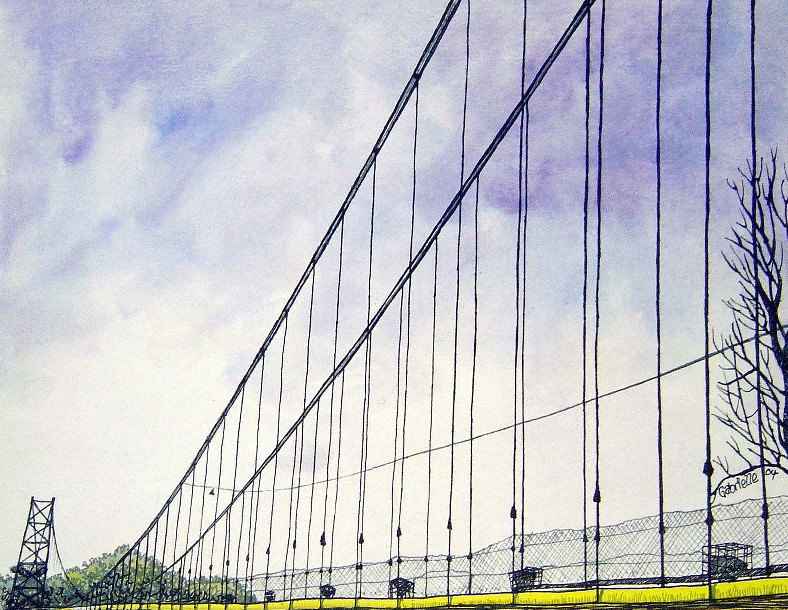It was in 1973 when I first walked across the Satok Bridge with my cousin. She was Kuching born and was very chatty about everything Kuching.
A visit to Kuching then would include a lovely visit to the Sarawak museum, a walk around the museum grounds and having Ice Kacang after that. We did not walk towards the cemetery as she had her pantang.

Then she drove to the Satok Bridge which she said was a must see. She was proud and happy that Kuching had a bridge. Being a ticketing agent then, she was very informative about everything and I was glad to absorb everything she said, as I was getting ready to be a graduate teacher.
Interesting, I was a little surprised that the bridge was a wooden bridge as I did not expect that. I was thinking of all the concrete bridges I have seen in Singapore. No I wasn't being snooty, but I should have been attentive since the suspension briedge was built in 1926.
The suspension bridge took three years to construct and was officially opened in 1926. It was 700 feet long and 7 feet wide. The architect was an A S Lowe.
during the Japanese War, many people from "Across River" had to bring food to the town on their backs. So the bridge was really a boon to the people of Kuching. And many people also walked across the bridge to forage for food while the Japanese soldiers were every where.
The bridge was mainly built to carry two 12 inch pipes across the river, in order to supply fresh water from the Matang Hills to Kuching Town.
The Satok Bridge could only handle pedestrains and small vehicles up to 3000 pounds. Passengers of small buses had to alight from the bus (6 passengers) while the bus drove ahead, with the passengers walking behind the bus.
the bridge seemed to be well built and lasted 80 years. After a stormy night on 7th October 2004, it finally collapsed.
during the Japanese War, many people from "Across River" had to bring food to the town on their backs. So the bridge was really a boon to the people of Kuching. And many people also walked across the bridge to forage for food while the Japanese soldiers were every where.
The bridge was mainly built to carry two 12 inch pipes across the river, in order to supply fresh water from the Matang Hills to Kuching Town.
The Satok Bridge could only handle pedestrains and small vehicles up to 3000 pounds. Passengers of small buses had to alight from the bus (6 passengers) while the bus drove ahead, with the passengers walking behind the bus.
the bridge seemed to be well built and lasted 80 years. After a stormy night on 7th October 2004, it finally collapsed.



No comments:
Post a Comment